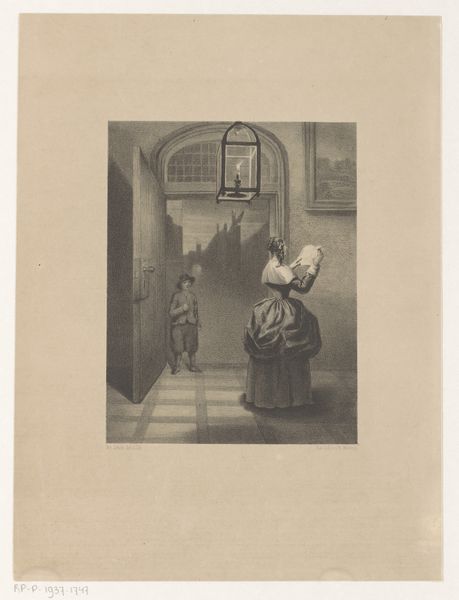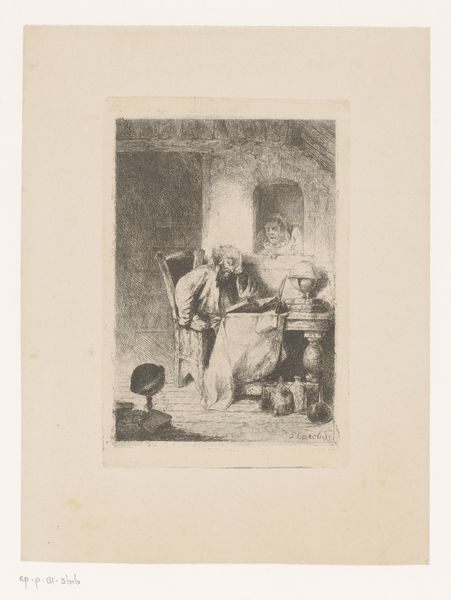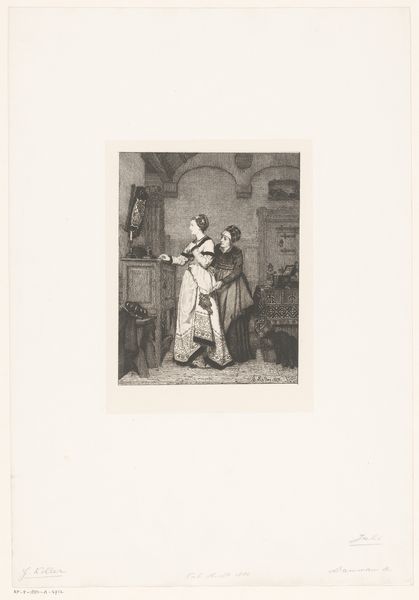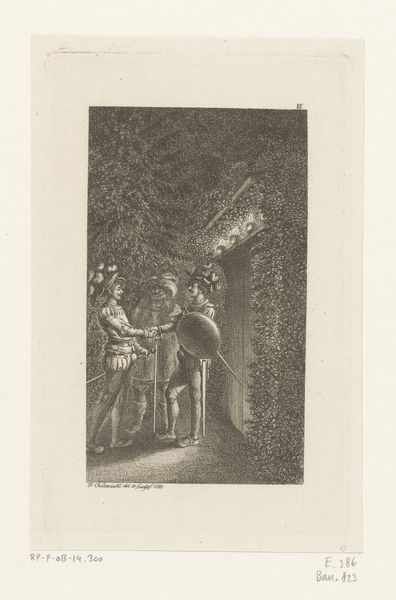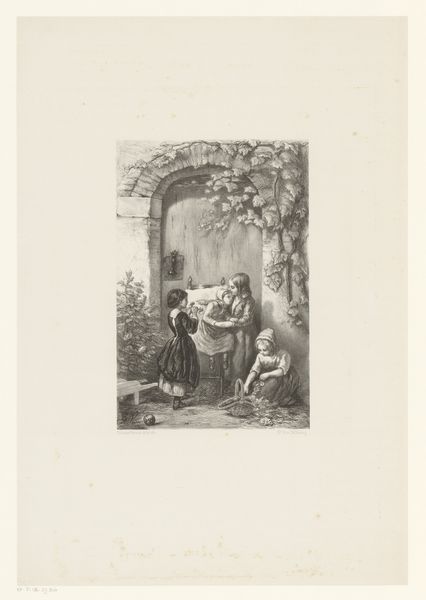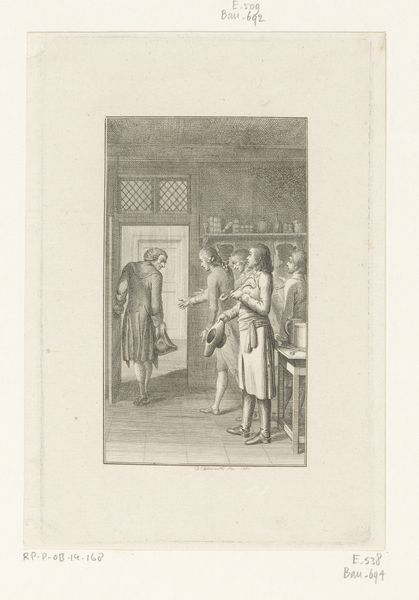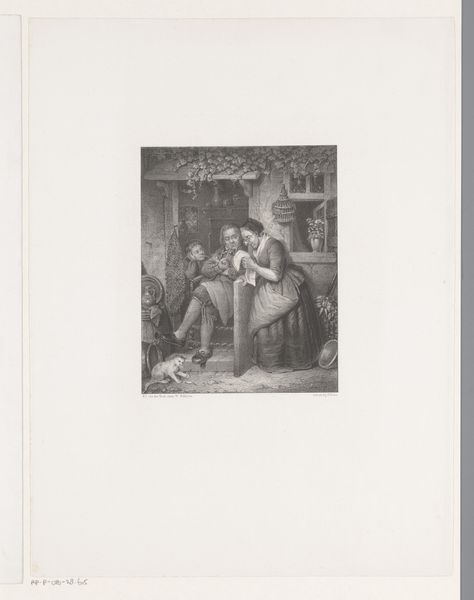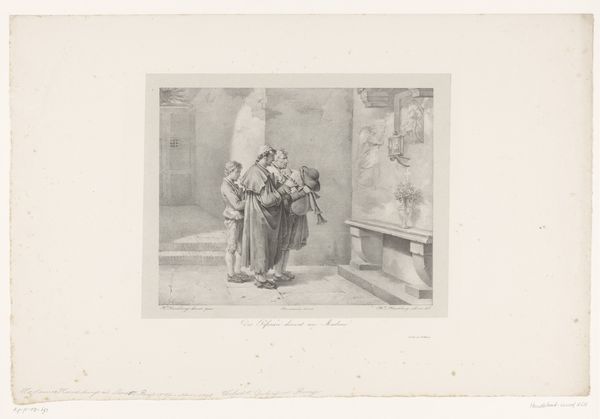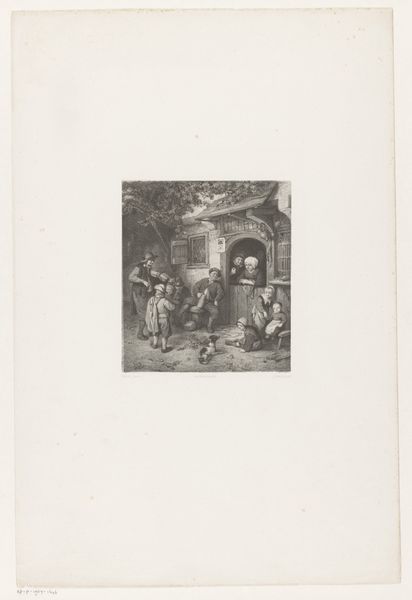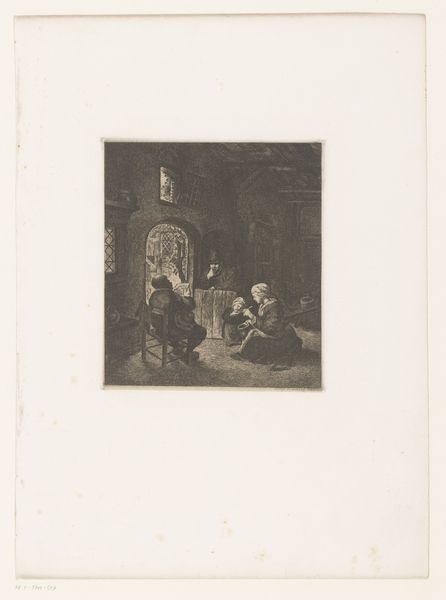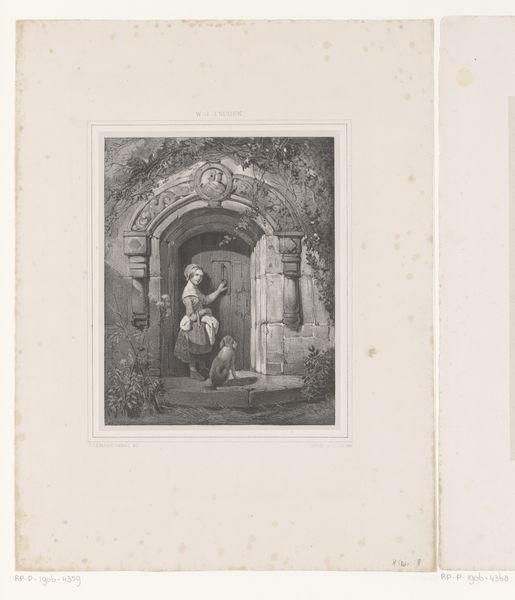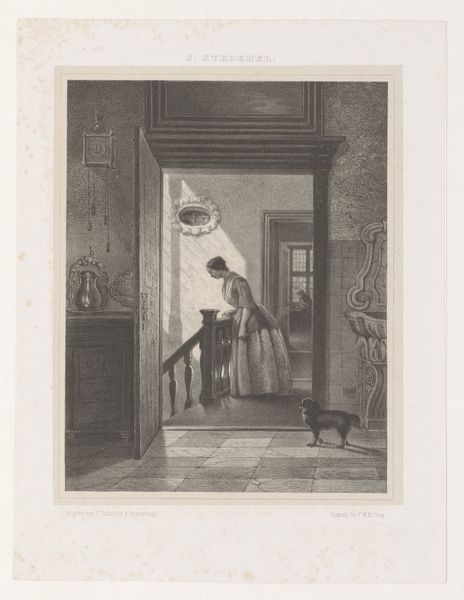
engraving
#
portrait
#
dutch-golden-age
#
landscape
#
figuration
#
genre-painting
#
engraving
#
realism
Dimensions: height 350 mm, width 267 mm
Copyright: Rijks Museum: Open Domain
Curator: This engraving, made before 1864, is titled "Woman Giving Bread to a Begging Boy" and it is the work of Adolf Carel Nunnink. It is currently held in the collection of the Rijksmuseum. Editor: The immediate impression is one of subdued grace. The composition is surprisingly balanced, especially given the subject matter. The gray-scale tones add a level of gravitas. Curator: Gravitas, indeed. Genre paintings like this offered social commentary, highlighting the disparities of wealth during the Dutch Golden Age and beyond. Think about how images shape public perception, even serving as tools for both reinforcement and reform of charitable actions. Editor: What interests me most is Nunnink’s mastery of light and shadow to create depth. Notice how the architectural details – the archway, the brickwork – guide the viewer’s eye into the heart of the scene and enhance the spatial ambiguity, creating an almost tunnel-like feeling. Curator: Yes, it’s cleverly composed to draw our focus to that interaction at the doorstep, but consider how these images played into the prevalent social narratives. Who was included and who was left outside? It reflects societal values of the era. Editor: And look closely at how the engraver varies the texture and weight of the lines to suggest differences in materials - from the coarse fabric of the boy's clothes to the smoother appearance of the woman's apron. It’s exquisite! Curator: Absolutely, but let’s also appreciate this piece as a social artifact. Images like this can also teach us much about changing perceptions on social inequalities. How did public and private charitable giving shift over time? Editor: I still come back to its pure artistry. I appreciate the level of detail given in rendering clothing and architecture; to see texture suggested via hatching and stippling, it transcends mere representation and ventures into abstraction, too. Curator: And to me, the impact is on thinking how powerful art could be during the 19th century to not just depict but also promote social reforms. Editor: It's interesting to think about this delicate composition. We have the interplay of light, form, and texture working in service of narrative; even through greyscale, it can still speak volumes.
Comments
No comments
Be the first to comment and join the conversation on the ultimate creative platform.
